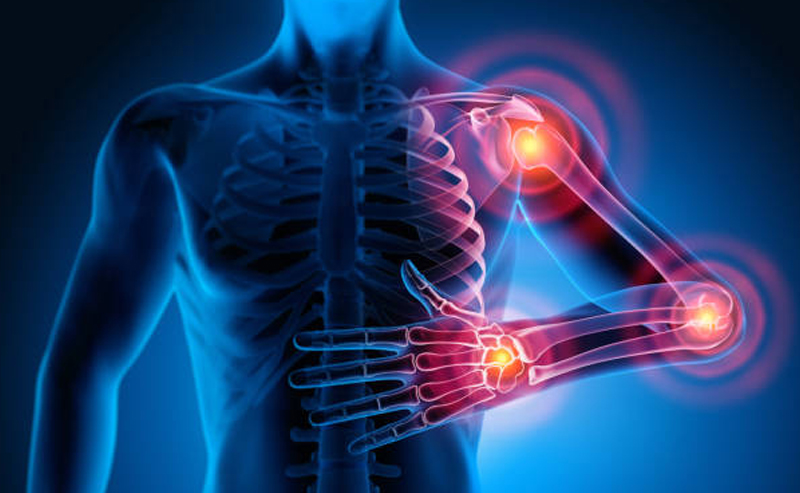
Connective tissue (Latin: Textus connectivus), like its name suggests, is designed to connect other tissues, protect sensitive parts of the body and provide support to organs. There are several types of connective tissue in the human body. Each of them is made with special types of cells. They differ from one another with their functions, structure and composition of the extracellular substance. This page tells more about the types of connective tissue.
Unfortunately connective tissue, like every part of the human body, may suffer disorders. In fact, there are more than 200 different types of connective tissue diseases According to Spero medical clinic, many people at the beginning do not pay much attention when the pain comes. They like to drag in time doctor’s appointments, which sometimes appear to have tragic consequences.
Below we pointed out the most popular connective tissue diseases.
Rheumatoid Arthritis (RA)
Rheumatoid arthritis is one of the most common connective tissue diseases and is an autoimmune one, which means the immune system attacks its own body. RA affects the joints and various organs. The most characteristic symptom is pain, stiffness and swelling in the joints of the hands and feet. Rheumatoid Arthritis can be inherited. There are 2 the most common forms of RA:
- Osteoarthritis, it’s a chronic disease of especially weight-bearing joints of the knees, hips, and spine. When OA gets worse, bones may harden and change shape. Cartilage can get uneven edges and cracks. Once cartilage breaks down, it can’t grow back on its own.
- Rheumatoid arthritis, an inflammatory disorder that can affect the lining of the joints, causing a painful swelling that can result in joint deformity and bone erosion. It can also affect different organs such as the heart or lungs. You can find more information here.
Systemic lupus Erythematosus
The systemic lupus erythematosus (SLE) is another autoimmune disease that can affect the skin, joints, kidneys, brain, and other organs. Symptoms of the disease are butterfly-like shape erythema appearing on the skin. Then is goes with erosions in the mouth, hypersensitivity to sunlight, inflammation or joint pain, even kidney disorders (protein and sometimes blood in the urine). Additionally Systemic lupus erythematosus can be accompanied by anemia and neuropsychiatric disorders. The cause of this disease is still unknown. However, it’s known that SLE usually has a genetic background and gets activated by the additional stimulus, like an infection.
Systemic Sclerosis (Scleroderma)
Another autoimmune condition that affects most people in the age of 30-50. Women are more likely to suffer this disease. SS occurs when the human body begins to overproduce collagen and it accumulates in your tissues. The effects of the disease are very extensive. It can cause scar tissue to form in the skin, joints pain, hair loss, small blood vessels, calcium deposits that can appear as white lumps under the skin, difficulty swallowing, esophageal reflux, spasms of the blood vessels in fingers and toes which causes the diminished blood supply to the local tissues, and turn them white or blue with extreme cold or high-stress level. It’s is called Raynaud’s phenomenon. Unfortunately, the core of the Scleroderma problem is still unknown for the doctors.
Polymyositis/Dermatomyositis
Polymyositis and Dermatomyositis are autoimmune two related myopathies characterized by inflammation and weakness of proximal muscles with extra muscular manifestation. Symptoms of both diseases may include muscle weakness – tenderness and pain, weight loss, difficulty swallowing, fatigue, contraction of the arms and legs, Raynaud’s phenomenon, shortness of breath, fever and more.
Granulomatosis with polyangiitis (GPA)
Granulomatosis with polyangiitis (GPA, formerly called Wegener’s) is a rare disease is an uncommon disorder that causes inflammation of the blood vessels in the nose, throat, sinuses, lungs and kidneys. How does it work? The disease is one of a group of blood vessel disorders called vasculitis. It’s about slowing the blood flow to some organs, which causes developing areas of inflammation so-called granulomas that affect the work of organs. The first warning signs usually involve sinuses, throat or lungs. When a person’s condition gets worse, GPA may affect blood vessels and organs. The most common symptoms are sinus infections and nosebleeds, bloody cough, shortness of breath, joint pain, fingers and toes numbness, urine with blood, sore skin, eye problems – vision disorder, redness and pain, ear inflammation and the problem with hearing.
Mixed connective tissue disease (MCTD),( also called Sharp syndrome)
No wonder this disease is called a mix, it contains three different connective tissue disorders’ symptoms, which are Systemic lupus erythematosus, Scleroderma, and Polymyositis. There is still no answer explaining the origin of such a disorder. Treatment may include medications such as nonsteroidal anti-inflammatory drugs, corticosteroids and immune-suppressing drugs. Read more in here
The bottom line
Connective tissue diseases are mainly autoimmune, in many cases hereditary. We still don’t know what exactly causes such disorders but today’s medicine at least can diagnose them quickly and help to cure them. If you suffer any kind of disorders that are mentioned below, do not hesitate and contact the doctor.
Comments
comments